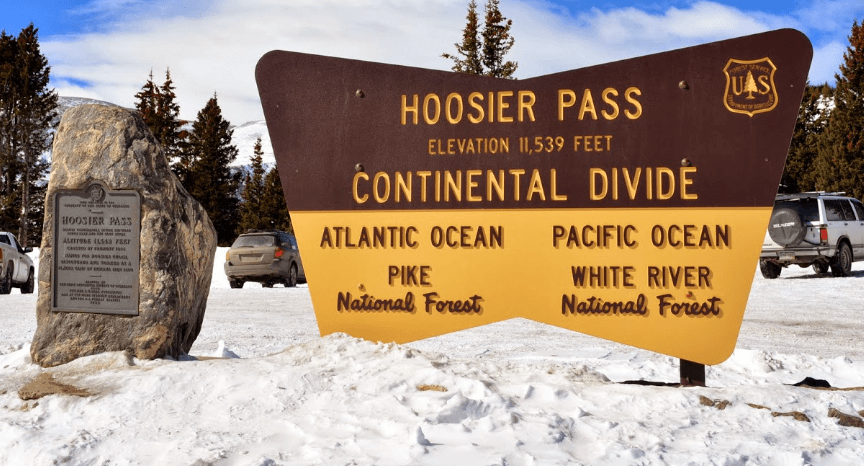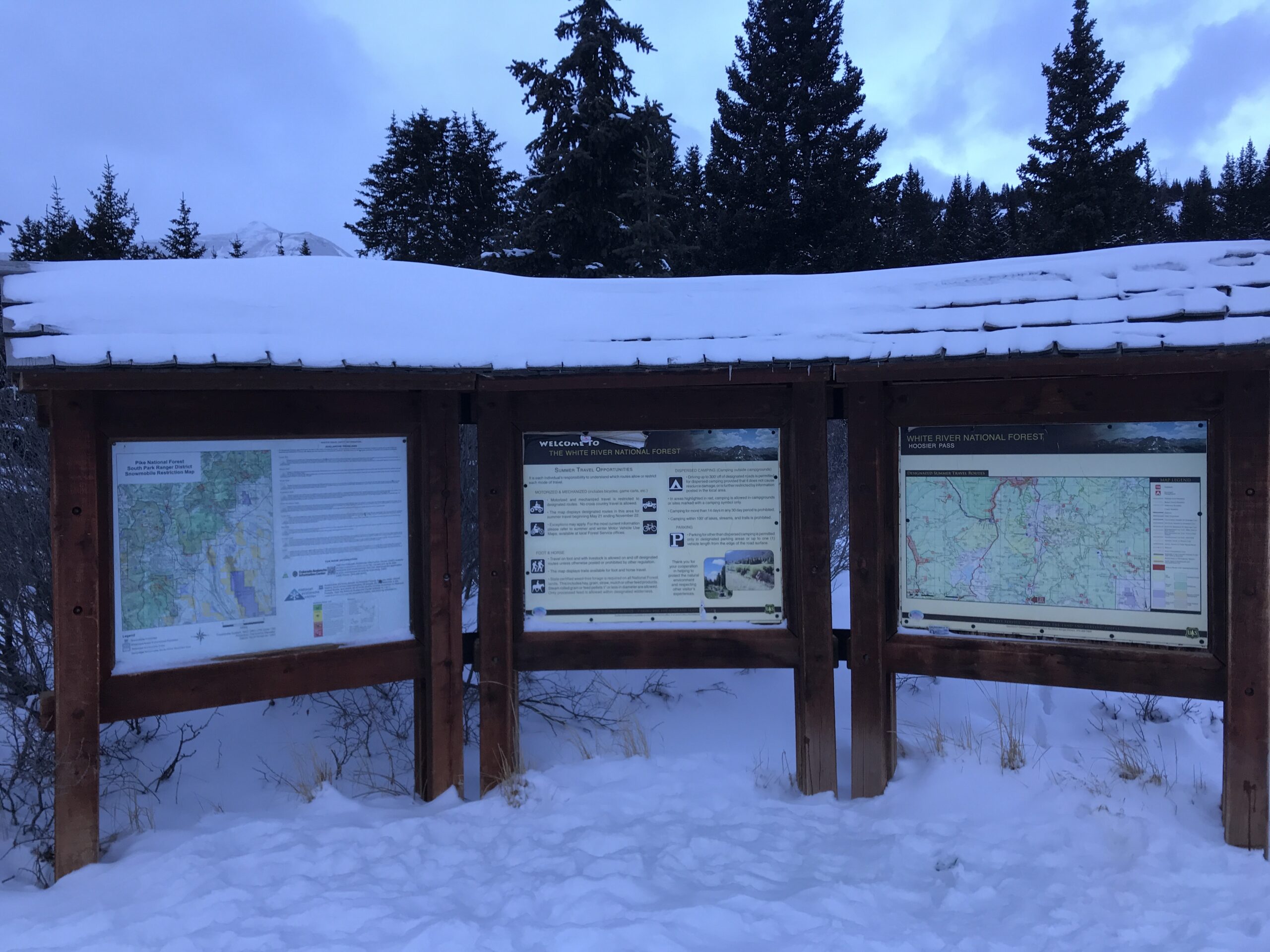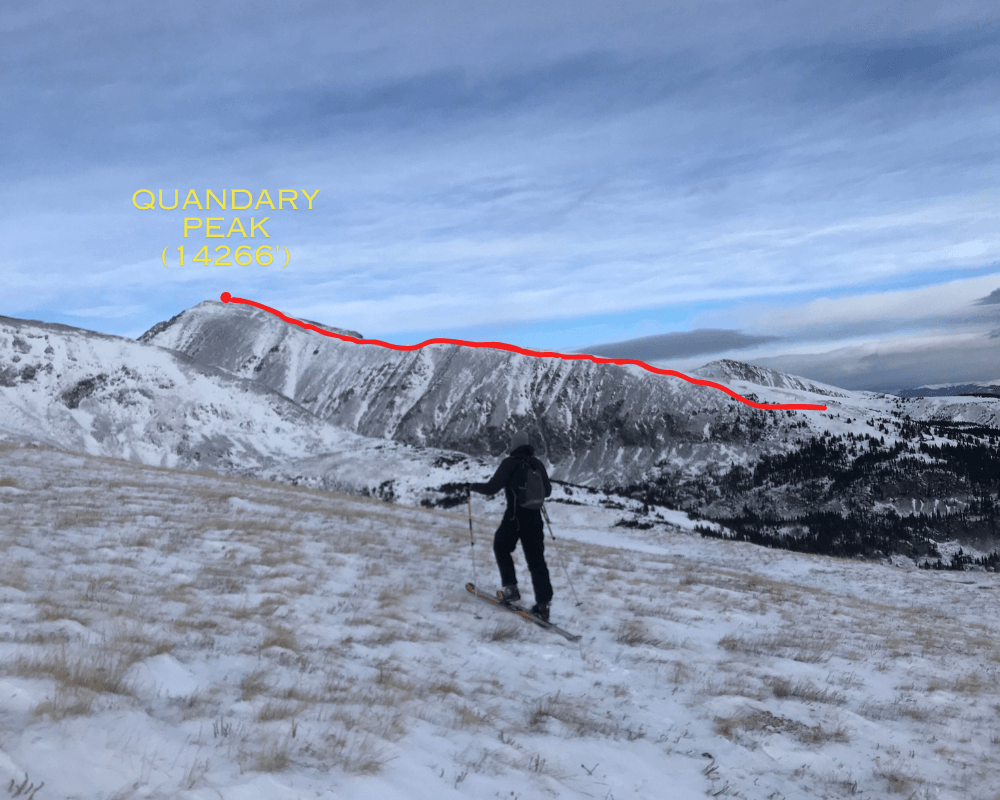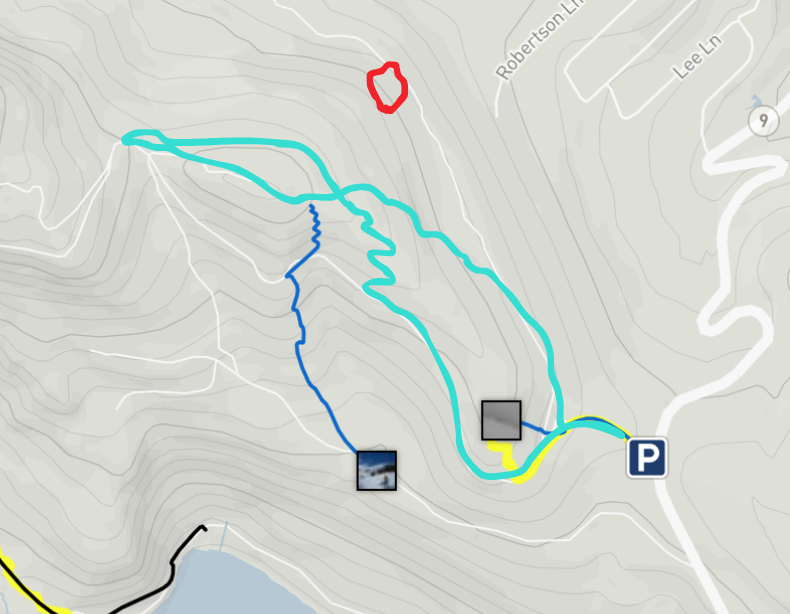I went Backcountry Skiing at Hoosier Pass. Well, technically I went splitboarding at Hoosier Pass. But I did bring a skier with me.
It’s a cool little spot to explore. It’s located just outside of Breckenridge, on the way into Alma. It was apparntly the site of a small ski area back in the 1940’s, and still features some interesting and relatively accessible ski terrain. But there is a lot to know if you’re thinking of heading out out here in the winter.
2 things brought my attention to this region. First, we rented a spot nearby for a few nights. We are an Epic pass family this year, and Breck is our main destination. Alma just happened to work out for a last minute weekend ski trip. Second, Hoosier Pass shows up on PowderProject as a nice spot to find some turns when avalanche danger is high.
Avalanche danger was not high that day, somewhat early in a fairly dry season. However, I’m still new to the world of backcountry exploration. I’ve done some reading. I’ve got a beacon. I understand the basics of using my gear. But above all, I know just enough to know I know nothing, and so I was on the hunt for a place where I could make mistakes in relative safety. I figured, if this is the region to hit when avy danger is high, I’d find extra margin for error when the danger is low.
This was probably reasonable logic, to an extent. Nonetheless, in taking precautions to put myself in a position of relative safety, I inadvertently put myself on the face of a hillside that had slid and killed two snowshoers and their dog, on nearly the exact same date, just two years earlier.
We weren’t in much real danger, honestly. Conditions had been much different for that slide. Both myself and my skier companion were carrying the recommended equipment. We had done some basic due diligence. Still, we made some significant mistakes, and so our little adventure stands as a strong reminder that exploring the backcountry is an inherently dangerous pursuit, and there’s really not a perfectly safe way to do it.
We were the first car in the lot at around 7am. A frequently snow bound parking lot, right off of Highway 9. If you’re on the lookout, it’s tough to miss it. I had done some scouting the day before and found a full lot at 9am, so I wanted to make sure we got started early.


We geared up, checked our beacons, and headed out. We found plenty of signage warning of avalanche risks in the region, as well as a functional beacon testing station.
Following the trail out of the parking lot, we quickly arrived at the base of an open meadow. With recent snow, there were some nice powder tracks coming off the top of the meadow. Here’s where we made our first mistake.
Instead of just skinning straight up the meadow and running powder laps, we decided to follow the seemingly more established trail around the back of the hill. We assumed that the trail would eventually work up over the back of the hill, allowing us to drop down the face on the way back to the lot. Apparently we missed our turn.
The trail just kept going. Once we realized that we were not getting any closer to that skiable meadow, we decided to try and break trail over the back of the hill. Traversing up the hillside, we found a cool view of Mt. Lincoln, a fourteener off to the South West, and the valley between Lincoln and North Star (the mountain we were technically on) which opens to a series of peaks in the distance.

A quick, if strenuous skin up, and we came to a grassy ridge line. Following the ridge towards the peak of North Star Mountain, Quandary Peak is clearly visible, reaching the same elevation as Lincoln to the South (14,266′). The East ridge line, marked in red in the image below is the most popular ascent of Quandary.

We poked around the grassy (and quite rocky) mountain meadow for a bit before trying to find a route down. With a fair amount of snow, you could probably find a line from the peak of North Star straight to the lot. Obviously, the conditions on this day were less than ideal. My split needed a few lines of P-Tex and some edge tuning after our little sojourn.
Here’s where we made our next big mistake. We decided to drop down a snaking gully in what we thought was the direction of the parking lot. This popped us out on a tree covered face, forced to traverse slowly through deep powder, passing somewhere above the site of that 2022 slide, as we hunted for a line back to the car.

The turquoise line in the map above is an estimate of the path we followed. We took the fire road around to the South until we came to a spot overlooking a steep face that was covered in hard pack. It looked skiable, but not very fun. We then looped the top of the smaller peak in the shadow of the higher mountain top and traversed over the backside down to the other side of the fire trail and back to the parking lot.
The darker blue lines are popular ski descents. The shorter one to the right is where we should have spent more time. We would have found some great turns just lapping that face, but we somehow completely missed the yellow route as it left the fire road on the way in.
The red outline marks the approximate site of the 2022 avalanche. The avalanche forecast for that day was at a Level 3 for the Vail and Summit County zone. Slab avalanches were in the forecast, with East facing slopes of particular concern.
The lesson here is that basic avalanche precautions may have helped to avoid that fatal incident in 2022. Carrying rescue gear and not traveling in pairs under an avalanche prone slope may well have been enough to save three lives. However, with a slope of just 35°, even those experienced in backcountry safety may not have identified the danger lurking above.
But if you’re just coming for the turns, so long as you exercise proper precautions and stick to doing laps on the face just off of the parking lot, the lower angle and minimal overhead here can make this a relatively comfortable spot. Just know that you can easily wander into more dangerous terrain.
As we returned to the parking lot, we passed several large groups that looked a lot like avalanche safety courses. And when we got to our car there was a rescue team suiting up, probably for som exercises. It seems like this spot is a popular hub for backcountry training, and that certainly makes sense, considering the ease of access and the comparative safety of the terrain.
